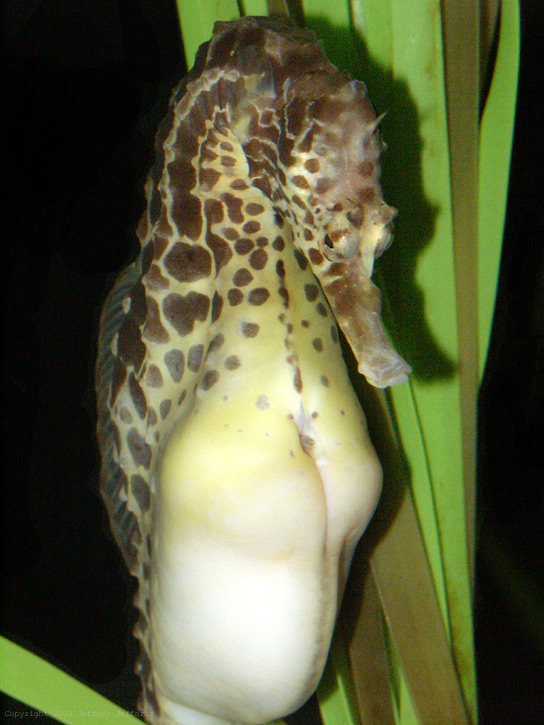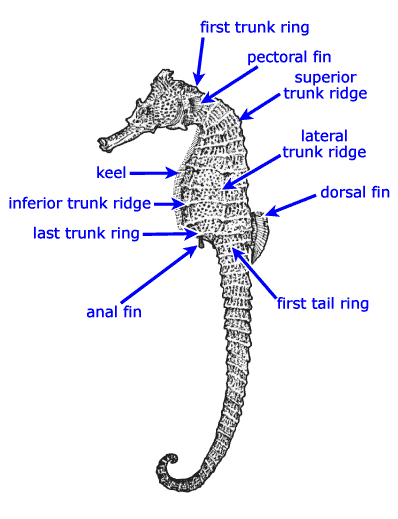A photo showing the different parts of the seahorse :)
Just like humans, the seahorse has many different parts in their body, having tubular testes and a duct system that merges with the urinary bladder at the cloaca. However, seahorses do not posssess an external copulatory organ! They have the anal fin instead.
Anyway, which are the ones that are classified under the reproductive system?
They are the:
- Tail
- Mesenteries (extend along body cavity just in front of the kidneys, in body of the seahorse)
- Anal fin
- Male brood pouch (only for male seahorses)
What part do they play in the reproductive system then? :)
First, the tail is used in greeting rituals and to hold onto a partner during mating.
Next, the mesenteries suspend the reproductive organs of the seahorses- testes of males and ovaries of females, where they are paired structures.
Moreover, the anal fin is situated above the opening of the brood pouch and covers it, where it then has connection with reproductive activity. It does this by directing the sperm released by the urogenital duct towards the mature eggs as they travel from the female to the male's brood pouch.
Last, the male brood pouch is located on the front of the tail. The pouch opening is positioned just under the anal fin and during mating, it is opened to allow the female to deposit eggs. The brood pouch lining provides nourishment (nutrients and oxygen) to the developing egg and removes all harmful waste. During the development of the young, the salinity of the pouch increases so that they will be adapted to seawater! Though it does not play a direct role in fertilisation, it does indeed ensure that the young are in safe hands but thus considered a secondary sex characteristic. The size of seahorse broods is much smaller than that of most fishes.
Hope you have benefited from this insight on the reproductive parts of seahorses! :D
A closer look! :)
Is there a physical difference between the male and female seahorses? :)
As seen from the above illustration, the physical similarities between the male and female are striking! The only discernible difference scientists have been able to find is in the abdominal area where the female is rough and angular. The male is smooth and the reproductive pouch is visible.






